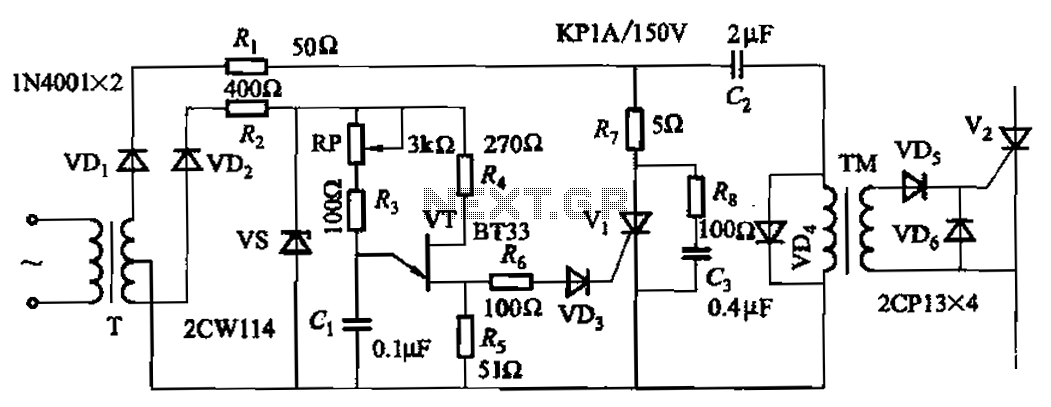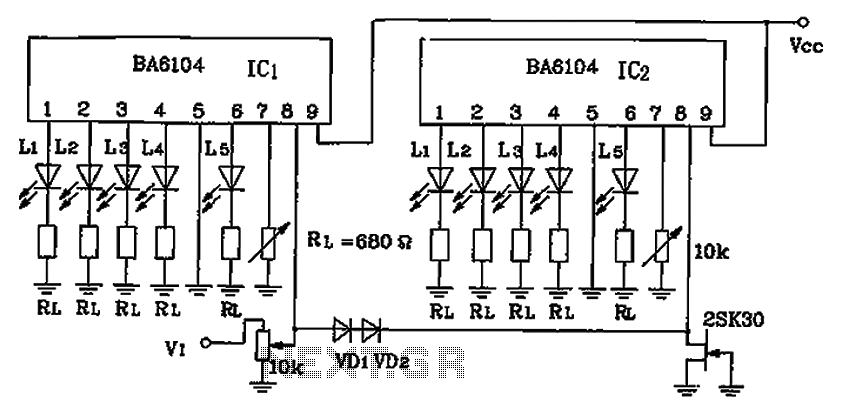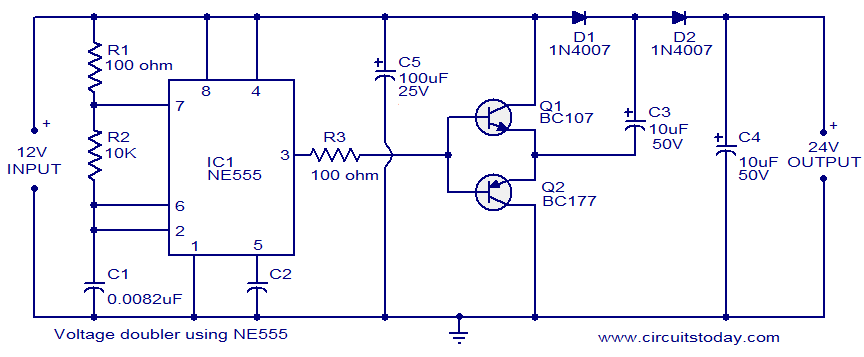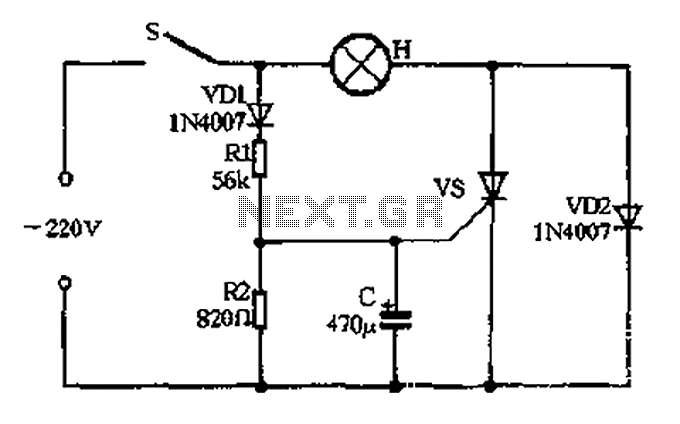
Lighting control circuit

After being careful about every orientation of every transistor, a circuit board was designed around the LM387N, which was not the intended chip nor the one originally ordered (LM258, commonly referred to as LM358). During testing before adding larger components, the circuit did not function as expected, leading to the conclusion that the op-amp was malfunctioning. A magnifying glass was used to verify the label on the chip. An update indicated that after installing a pin-scrambler, the circuit began to work roughly as anticipated. The primary component, the high-end shunt control, delivers 3.85 volts to the base of the shunt transistor at 31.1 volts, which is slightly earlier than planned but remains within a safe range. At voltages in the high 20s, the shunt remains inactive as intended. The LED control circuit provides slightly more power to the lights than originally planned, primarily resulting in a low-end effect. At 31.1 volts, the control voltage is 1.7, aligning with expectations. However, at 22.5 volts, it measures 2.6 (planned was 3.1), at 12.9 volts it is 3.24 (planned was 3.6), and at 9.6 volts it is 3.4 (planned was 3.8). The off-level shunt base voltage is 0.6, compared to the planned 0.2, but this should not affect the operation with the specified Darlington shunt transistor, which has a Vbe of 2.8 volts. The new hub (Shimano 3D71) produces excessive power at high voltage if the LED circuit does not utilize it fully. The revised design employs a piecewise linear function of the input voltage to control the voltage regulation circuit in a BuckPuck, along with a shunt to prevent overvoltage. The intent is to produce sufficient light at lower power levels while allowing excess power to be diverted to the lights at higher power levels, ensuring that between 30 and 31 volts, the LEDs receive near-maximum power (9-10 watts), with the shunt activated to dissipate up to an amp (30 watts) to maintain voltage levels. The shunt circuit is designed to allow an external device (up to seven LEDs) to handle the power dissipation instead of the transistor. An Endor Star, consisting of three surface mount Luxeon Rebels on a single puck, is intended for use to dissipate up to 10 watts externally. The goal is to limit the supply voltage to 32 volts to ensure safety, as the op-amp and BuckPuck are rated for 32 volts, while capacitors are rated for 35 volts and diodes for 40 volts. The complexity of the combined circuit necessitates a printed circuit board (PCB) for durability, especially considering the vibrations experienced on a bicycle. CadSoft offers Eagle software for PCB design, with the free version being sufficient for current needs. The autorouter feature is particularly useful once familiarized with its unique characteristics. It is noted that several zener diodes do not reach their rated voltage until a specific current flows through them, which can lead to inefficiencies if this current also flows into the base of a transistor, resulting in a prolonged activation period for the shunt. Real-world performance may vary with different component values, requiring adjustments to resistor gain and forward voltage on transistors, and simulations should be conducted to determine operational margins. There is an interest in open-sourcing the design, but challenges exist in applying the GPL on the PCB. Concerns are raised regarding the high costs of bicycle lighting components, with the total cost of components for the board estimated between $15-20, plus an additional $15 for the BuckPuck, while LEDs and lenses are approximately $10 each, necessitating at least three for a bicycle.
The circuit design incorporates an operational amplifier (op-amp) configuration, specifically utilizing the LM387N for signal processing. The high-end shunt control mechanism is critical for regulating the output voltage to the shunt transistor, which is responsible for managing excess current and preventing overvoltage conditions. The shunt transistor operates in conjunction with a Darlington pair, allowing for efficient current amplification and control. The LED control circuit is designed to modulate the brightness of the LEDs based on the input voltage, employing a feedback loop to adjust the control voltage dynamically.
Incorporating a BuckPuck voltage regulator allows for efficient power management, ensuring that the LEDs receive the required voltage and current for optimal performance. The piecewise linear function implemented in the control circuit enables precise voltage regulation across varying input levels, facilitating a stable output even under fluctuating conditions.
The external shunt circuit is designed to accommodate multiple LED configurations, allowing for scalability in the lighting system. The Endor Star module's integration provides a robust solution for heat dissipation, essential for maintaining operational integrity in high-power applications. The PCB layout must be optimized for minimal parasitic inductance and capacitance, ensuring reliable performance in the face of mechanical vibrations typical in bicycle applications.
Overall, the design aims to deliver a cost-effective, efficient, and durable lighting solution for bicycles, leveraging modern electronic components and design techniques to overcome the limitations of existing products on the market.After being incredibly careful about every orientation of every weird transistor, I designed the board around a LM387N , which is not the chip I intended or the one that I had ordered ” LM258 (usually referred to as LM358, but the 258 works in the cold). I was testing the board before putt ing on the big components, and it was just not working, and in the end, it seemed like the op-amp was on drugs. In the end, I got out a magnifying glass to check the label. DOH! Up-update: After installing a pin-scrambler, it works roughly as predicted. The most important part of the circuit, the high-end shunt control, delivers 3. 85 volts to the base of the shunt transistor at 31. 1 volts. This is a perhaps a half-volt earlier than planned, but it`s a half-volt to the safe side. In the high 20s, the shunt is not activated, as planned. (1) the LED control sends a little more power to the lights than I had planned. Not lots, and it`s mostly a low-end effect. At 31. 1, the control voltage is 1. 7, which is exactly on target. At 22. 5 it is 2. 6 (plan, 3. 1) and at 12. 9 it is 3. 24 (plan, 3. 6) and at 9. 6 it is 3. 4 (plan, 3. 8). (2) the off-level shunt base voltage is 0. 6, where the plan was 0. 2. This should not be an issue with the particular Darlington shunt transistor; it claims to have a Vbe of 2.
8 volts. The new hub ( Shimano 3D71 ) produces too much power, at too high a voltage if your LED circuit does not use it all. The new plan uses a piecewise linear function of the input voltage to drive the voltage control circuit on a BuckPuck, plus a shunt to guard against overvoltage.
The idea is that at lower power, enough light is produced, but at high power, the excess is dumped into the lights, with the intent that somewhere between 30 and 31 volts, the LEDs are receiving near-maximum power (9-10 watts), and the shunt is activated to drain up to an amp (30 watts) to keep the voltage from going any higher. The shunt circuit allows an external device (as many as 7 LEDs!) to dissipate the power instead of the transistor.
My plan is to use an Endor Star (3 surface mount Luxeon Rebels on a single puck) that I bought but could not find a use for (could not heat sink effectively enough) to dissipate up to 10 watts externally. The goal is to ensure that the supply voltage is limited to 32 volts, no matter what, because the op-amp and the BuckPuck are rated for 32, the capacitors are rated for 35, and the diodes are rated for 40.
The combined circuit is just complex enough that it should be on a PCB, which should also make the result more durable. Vibration on a bicycle is a serious problem. CadSoft sells Eagle, software for designing printed circuit boards. The full version does way more than I need; the free version is enough for me, at least so far. The autorouter is mostly my friend, especially once I got used to its quirky habits. Quite a few zener diodes don`t reach their rated voltage until they have quite a few milliamps flowing through them.
If those milliamps are also flowing into the base of a transistor then the shunt will have a long, wasteful on ramp . Just because it looks like it works, how will it behave in the real world with slightly different parts Tinker with element values, tinker with resistor gain, try monkeying with the forward voltage on transistors.
Push things around till the simulation goes wonky, so that you can know how large your sensible-operation margins are. Oh yeah, about the copyright. I`d like to open source it, but cannot figure out how to put the whole GPL on one PCB. I`m a bit ticked off at all the bicycle lighting companies; everything costs too much, way too much. Bought retail, the cost of the components on this board is in the 15-20 dollar range, plus the buckpuck, which is another $15.
LEDs+lenses cost about $10 apiece, you need at least 3 for a bike (4 is better), unless you want 🔗 External reference
The circuit design incorporates an operational amplifier (op-amp) configuration, specifically utilizing the LM387N for signal processing. The high-end shunt control mechanism is critical for regulating the output voltage to the shunt transistor, which is responsible for managing excess current and preventing overvoltage conditions. The shunt transistor operates in conjunction with a Darlington pair, allowing for efficient current amplification and control. The LED control circuit is designed to modulate the brightness of the LEDs based on the input voltage, employing a feedback loop to adjust the control voltage dynamically.
Incorporating a BuckPuck voltage regulator allows for efficient power management, ensuring that the LEDs receive the required voltage and current for optimal performance. The piecewise linear function implemented in the control circuit enables precise voltage regulation across varying input levels, facilitating a stable output even under fluctuating conditions.
The external shunt circuit is designed to accommodate multiple LED configurations, allowing for scalability in the lighting system. The Endor Star module's integration provides a robust solution for heat dissipation, essential for maintaining operational integrity in high-power applications. The PCB layout must be optimized for minimal parasitic inductance and capacitance, ensuring reliable performance in the face of mechanical vibrations typical in bicycle applications.
Overall, the design aims to deliver a cost-effective, efficient, and durable lighting solution for bicycles, leveraging modern electronic components and design techniques to overcome the limitations of existing products on the market.After being incredibly careful about every orientation of every weird transistor, I designed the board around a LM387N , which is not the chip I intended or the one that I had ordered ” LM258 (usually referred to as LM358, but the 258 works in the cold). I was testing the board before putt ing on the big components, and it was just not working, and in the end, it seemed like the op-amp was on drugs. In the end, I got out a magnifying glass to check the label. DOH! Up-update: After installing a pin-scrambler, it works roughly as predicted. The most important part of the circuit, the high-end shunt control, delivers 3. 85 volts to the base of the shunt transistor at 31. 1 volts. This is a perhaps a half-volt earlier than planned, but it`s a half-volt to the safe side. In the high 20s, the shunt is not activated, as planned. (1) the LED control sends a little more power to the lights than I had planned. Not lots, and it`s mostly a low-end effect. At 31. 1, the control voltage is 1. 7, which is exactly on target. At 22. 5 it is 2. 6 (plan, 3. 1) and at 12. 9 it is 3. 24 (plan, 3. 6) and at 9. 6 it is 3. 4 (plan, 3. 8). (2) the off-level shunt base voltage is 0. 6, where the plan was 0. 2. This should not be an issue with the particular Darlington shunt transistor; it claims to have a Vbe of 2.
8 volts. The new hub ( Shimano 3D71 ) produces too much power, at too high a voltage if your LED circuit does not use it all. The new plan uses a piecewise linear function of the input voltage to drive the voltage control circuit on a BuckPuck, plus a shunt to guard against overvoltage.
The idea is that at lower power, enough light is produced, but at high power, the excess is dumped into the lights, with the intent that somewhere between 30 and 31 volts, the LEDs are receiving near-maximum power (9-10 watts), and the shunt is activated to drain up to an amp (30 watts) to keep the voltage from going any higher. The shunt circuit allows an external device (as many as 7 LEDs!) to dissipate the power instead of the transistor.
My plan is to use an Endor Star (3 surface mount Luxeon Rebels on a single puck) that I bought but could not find a use for (could not heat sink effectively enough) to dissipate up to 10 watts externally. The goal is to ensure that the supply voltage is limited to 32 volts, no matter what, because the op-amp and the BuckPuck are rated for 32, the capacitors are rated for 35, and the diodes are rated for 40.
The combined circuit is just complex enough that it should be on a PCB, which should also make the result more durable. Vibration on a bicycle is a serious problem. CadSoft sells Eagle, software for designing printed circuit boards. The full version does way more than I need; the free version is enough for me, at least so far. The autorouter is mostly my friend, especially once I got used to its quirky habits. Quite a few zener diodes don`t reach their rated voltage until they have quite a few milliamps flowing through them.
If those milliamps are also flowing into the base of a transistor then the shunt will have a long, wasteful on ramp . Just because it looks like it works, how will it behave in the real world with slightly different parts Tinker with element values, tinker with resistor gain, try monkeying with the forward voltage on transistors.
Push things around till the simulation goes wonky, so that you can know how large your sensible-operation margins are. Oh yeah, about the copyright. I`d like to open source it, but cannot figure out how to put the whole GPL on one PCB. I`m a bit ticked off at all the bicycle lighting companies; everything costs too much, way too much. Bought retail, the cost of the components on this board is in the 15-20 dollar range, plus the buckpuck, which is another $15.
LEDs+lenses cost about $10 apiece, you need at least 3 for a bike (4 is better), unless you want 🔗 External reference
Warning: include(partials/cookie-banner.php): Failed to open stream: Permission denied in /var/www/html/nextgr/view-circuit.php on line 713
Warning: include(): Failed opening 'partials/cookie-banner.php' for inclusion (include_path='.:/usr/share/php') in /var/www/html/nextgr/view-circuit.php on line 713





